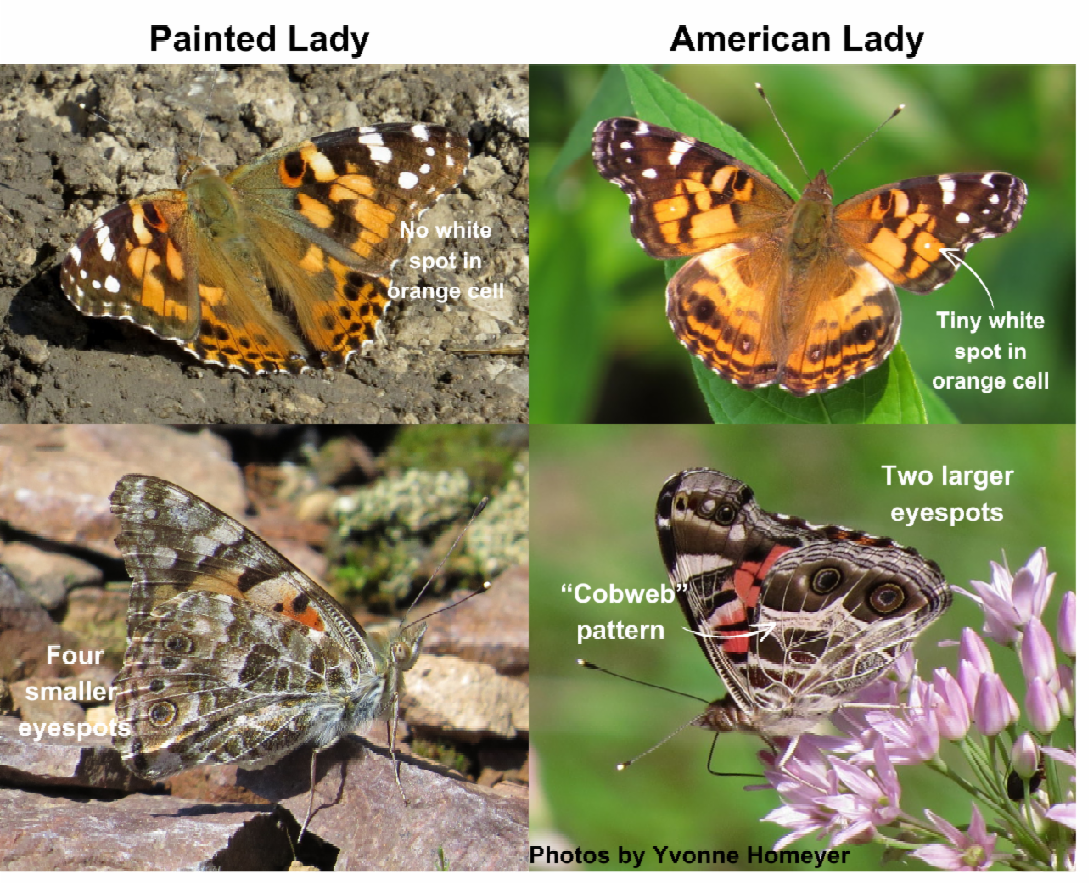Painted Lady vs. American Lady
Range
In North America, two closely related butterflies in the Vanessa genus are commonly seen: the painted lady (Vanessa cardui) and the American lady (Vanessa virginiensis). Though they may look similar, they are distinct species with subtle behavioral and ecological differences. Despite being delicate in appearance, these ladies are incredibly strong, their migratory journeys can span thousands of miles!
American ladies are found throughout most of the U.S. and parts of Mexico, while painted ladies have a broader range, spanning from Canada to Panama and even beyond. Both species are naturalized in Hawaii and prefer open areas such as fields and weedy areas.
The Painted Lady
Meet the painted lady, also known as Vanessa cardui. She’s a beautiful orange and black butterfly seen across the world—and she’s one tough traveler! Painted ladies can fly thousands of miles during migration, especially in the western U.S.
The painted lady is a medium-sized butterfly with a wingspan of 2–2 ¼ inches. Her wings are delicately patterned: a peachy-orange base overlaid with black and white spots near the tips of the forewings, and four eye spots on the underside of her hindwings—thought to be a defense against predators.
What makes this butterfly stand out isn’t just her beauty, it’s her range. Found on every continent except Antarctica and South America, the painted lady is often called the “cosmopolitan butterfly” or "thistle butterfly.”
The American Lady
The American lady (Vanessa virginiensis) may not get as much global attention as her cousin, but she’s just as cool. American painted ladies also migrate, though their movements are less dramatic. They overwinter in southern parts of the U.S. and fly north in the spring, often reaching Canada by summer.
One way to tell her apart from the painted lady is the number of eyespots on the underside of her hindwings: American ladies have two big ones, while painted ladies have four smaller ones.
Habitat
American and painted ladies live almost anywhere, especially near meadows, parks and mountaintops.
Life Cycle
Like most butterflies, their life cycle goes from egg → caterpillar → chrysalis → adult. Here's a breakdown of some stages:
Egg: Pale green or yellowish, barrel-shaped, and laid one at a time.
Caterpillar: Up to 1¼ inches long; can be chartreuse with black marbling or purplish with a yellow stripe down the back.
Chrysalis: Around ⅞ inch long, lavender-brown, kind of bumpy, and hangs upside down with a blunt little “beak” at the end.
Favorite Host Plants
A host plant is where a butterfly lays its eggs. It’s the first food source for the caterpillars and offers protection for the developing caterpillars from enemies such as spiders, wasps, praying mantises, and dragonflies.
Lady Vanessa lays her eggs on:
Thistles – These prickly plants are a top host choice for painted ladies (Vanessa cardui) and sometimes American ladies too. Thistles are rich in nutrients and great for caterpillar growth.
Cudweeds, Everlastings, and Asters – All part of the aster family (Asteraceae) and super important as host plants, especially for American Ladies (Vanessa virginiensis). Caterpillars munch on the leaves once they hatch!
Want butterflies in your yard? Add the native versions of these plants to your yard to attract them!
Why They Matter
Both American and painted lady butterflies are ecologically vital! They serve as both pollinators and a super nutritious food source for birds, reptiles, and other bugs. Their presence is a sign of a healthy, functioning ecosystem!


